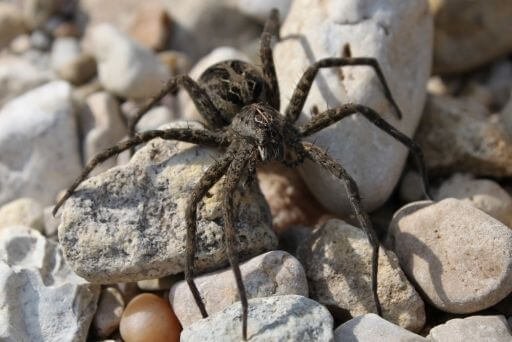Why female spiders eat male spiders before or after mating? – Sexual Cannibalism in spiders
Not all mating processes are exciting, pleasurable, and sensuous. Some are cruel, suicidal, and life-threatening with dramatic endings!
Spiders are popular for making silk cobwebs stronger than steel. But rarely anyone know their gruesome sexual cannibalistic (act of eating sexual partners) tales. Many female spider species kill and consume their partners (mostly males) before, during, or after copulation or lovemaking.
Several ecologists and zoologists (Polis 1981; Elgar 1992; Jaimie 1995; Johns & Maxwell 1997; Maydianne 1998; Johnson 2001; Fromhage, Uhl, & Schneider 2003) were all fascinated and intrigued to find reasons behind this sexual cannibalistic behavior of female spiders.
A handful of ecologists and zoologists observed and studied sexual cannibalism in raft spiders, wolf spiders, fishing spiders, Wasp spiders, redback spiders, and Orb-Weaving Spiders. Over years, several ecologists and zoologists interpreted this cannibalistic behavior of female spiders with three different hypotheses:

- Adaptive Foraging Hypothesis:
This hypothesis was first formulated in a 1991 study by Newman & Elgar. The study was published in an American journal called The American Naturalist, vol. 138 published by The University of Chicago Press. The journal publishes articles for a society known as The American Society of Naturalists that works to enhance the knowledge of organic evolution and biological sciences.
Newman & Elgar speculate that it is an adaptive behavior in female spiders to weigh the worth of approaching or courting-male as a nutrient source versus a sexual mate. According to this hypothesis, female spiders usually attack when mates are available in abundance but the food is limited. As males are available in abundance and food is limited, the female spider will consider courting-males as easy snacks.
The adaptive foraging hypothesis also entails that non-virgin female spiders will more likely attack the approaching males compared to virgins. The hypothesis mainly predicts the reasons behind precopulatory sexual cannibalistic behavior in female spiders.
A 1997 study by Arnqvist & Henriksson also tested this hypothesis. They found potential evidence in the behavior of fishing spiders (Dolomedes fimbriatus). Food limitation significantly increased sexual cannibalism in female fishing spiders. Other female species also depict precopulatory sexual cannibalistic behavior in limited food conditions.

- Aggressive-spillover Hypothesis:
Later in the year 1997, Arnqvist & Henriksson formulated another hypothesis, the aggressive-spillover hypothesis, in their study of sexual cannibalism in fishing spiders (Dolomedes fimbriatus). Both researchers proposed the notion that this sexual cannibalistic behavior of female spiders was not merely the result of the adaptive foraging hypothesis but was also a form of aggression. The female spiders either mistake the approaching courting-males as prey or vent their accumulated aggression on the courting mates.
Another explanation behind this sexual cannibalistic behavior given by Arnqvist & Henriksson was a cruel mechanism of mate refusal. Females refuse mates by killing and spilling over their aggression.
But later, several other studies regarding sexual cannibalism in other spider species (Johnson & Sih, 2005; Pruitt et al., 2008; Berning et al., 2012; Khadka & Foellmer, 2013; Bueno, & Larano, 2014) studied this aggressive behavior. Various researchers didn’t find any repeated behavioral proof for this hypothesis. Researchers entailed that this hypothesis mainly depends on the personality of females other than a high level of aggression.
In a 2016 study, published in a journal called “Animal Behaviour”, a team of five Slovenian and Australian researchers found substantial evidence that sexual size dimorphism and mate choice seem ideal to explain female spiders’ aggressive and sexual cannibalistic behavior.
The team included four researchers (Klemen Čandek, Tjaša Lokovšek, Tatjana Čelik, Simona Kralj-Fišer, and Matjaž Kuntner) from the Evolutionary Zoology Laboratory, Biological Institute ZRC SAZU, Ljubljana, Slovenia, and one researcher (Mark A. Elgar) from the School of BioSciences, University of Melbourne, Melbourne, VIC, Australia.
The research team collected raft spiders (Dolomedes fimbriatus) and observed their mating and cannibalistic behavior in captivity. In their research, they found that only highly voracious or starving female spiders remained unmated as they reportedly killed approaching males. The team of researchers didn’t find any solid proof that maladaptive voracity increases sexual cannibalism. Every female spider exhibits different behavior towards prey and approaching males.
Instead of starvations and individual personality traits, sexual cannibalism depends more on sexual size dimorphism and mating preferences of the females. The females who had a larger body constitution than males attacked relatively more than females with equal or smaller body masses.
All the female raft spiders attacked their approaching mates at some point of copulation; before, during, or after. The virgin females were more prone to attacking their males than non-virgin.
Only 48.3% of female raft spiders successfully mated during the first mating trial. 52% of raft spiders attacked the approaching males and failed to mate. But during the second trial, females showed less aggressive behavior.

- Paternal investment Hypothesis:
This hypothesis is the most rarely texted explanation of sexual cannibalism in female spiders. The paternal investment hypothesis is based more on the abstract idea than on any substantial scientific proof. This hypothesis entails that male spiders sacrifice themselves to enhance the female fertility rates, female fecundity, and their offspring’s health. This hypothesis is only limited to Dark fishing spider species (Dolomedes tenebrosus).
The researchers, Dr. Schwartz and Dr. Hebets, found in their study that the females who consumed the males after mating gave birth to healthier offspring than females who didn’t kill and consume their mating males. The male spiders present themselves to the female spiders as a form of nuptial feeding.
But there is almost no solid proof to solidify this hypothesis of why female spiders eat male spiders after mating.




